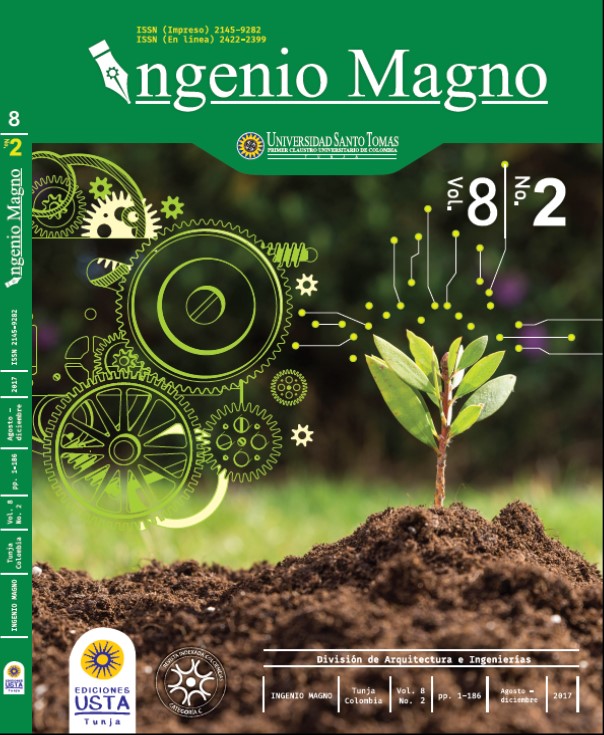Selection and processing of accelerogramas for the dynamic analysis of the teatinos dam
Main Article Content
Abstract
Downloads
Article Details
DECLARATION OF ORGINIALITY OF SUBMITTED ARTICLE
With this document, I/We certify that the article submitted for possible publication in the institutional journal INGENIO MAGNO of the Research Center Alberto Magno CIIAM of the University Santo Tomás, Tunja campus, is entirely of my(our) own writing, and is a product of my(our) direct intellectual contribution to knowledge.
All data and references to completed publications are duly identified with their respective bibliographical entries and in the citations thus highlighted. If any adjustment or correction is needed, I(we) will contact the journal authorities in advance.
Due to that stated above, I(we) declare that the entirety of the submitted material is in accordance with applicable laws regarding intellectual and industrial property, and therefore, I(we) hold myself(ourselves) responsible for any complaint related to it.
If the submitted article is published, I(we) declare that I(we) fully relinquish publishing rights of the article to the University Santo Tomás, Tunja campus. As remuneration for this relinquishment of rights, I(we) declare my(our) agreement to receive two (2) copies of the edition of the journal in which my(our) article appears.
References
Acevedo, A.B (2012). Criterios sismológicos para seleccionar acelerogramas reales de la red nacional de acelerógrafos de Colombia para su uso en análisis dinámicos. Revista EIA, 17, 57-70
Bommer, J. J. and. Acevedo, A. B (2004). “The use of real earthquake accelerograms as input to dynamic analysis,” Journal of Earthquake Engineering, 8, 1 – 50.
Bommer, J.J. Acevedo, A.B. and Douglas, J. [2003a] \The selection and scaling of real earthquake accelerograms for use in seismic design and assessment," Proceedings of ACI International Conference on Seismic Bridge Design and Retrofit, American Concrete Institute.
Bommer, J.J., Scott, S.G., Sarma, S.K., (2000). Hazard - consistent earthquake scenarios. Soil Dynamics and Earthquake Engineering 19: pp. 219– 231.
Kramer, S. (1996). Geotechnical Earthquake Egineering. Englewood Cliffs. Prentice hall
Ministerio de Ambiente, Vivienda y Desarrollo Territorial, Reglamento Colombiano de construcción Sismo Resistente, NSR-10. Bogotá, 2010.
Pardo, A. (2014) Criterios de selección de acelerogramas reales para su uso en análisis dinámicos para la ciudad de Medellín. Maestría en estructuras. Universidad EAFIT, Medellín.

